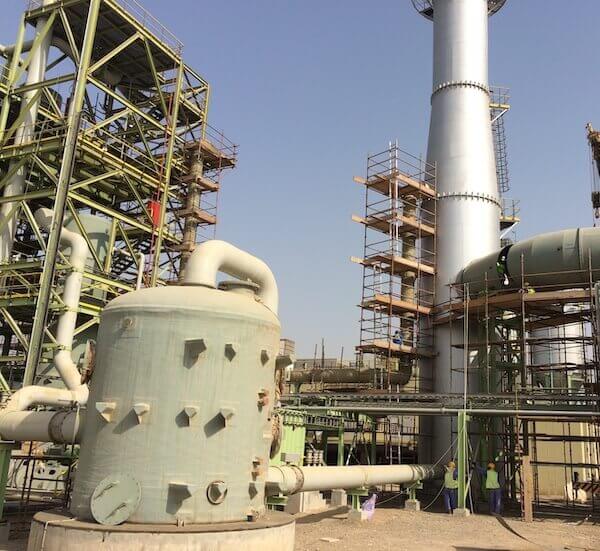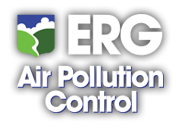
Toxic Heavy Metal and Dioxin Destruction
Toxic heavy metals, in particular mercury and cadmium, may be present in the thermal oxidiser flue gas, and must be abated to meet the site or process disharge permit. Dioxins, furans and PCBs are extremely toxic and their discharge to stack is similarly tightly regulated, with typical dioxin emissions standards 0.05-0.1 ng/m3. Dioxins, furans and PCBs are destroyed by correct thermal oxidation, but dioxins may reform post oxidation by de novo synthesis, typically in the range 250-400oC.
ERG’s systems are designed to meet these demands. Careful control of the gas cooling upstream of the quench limits the reformation of dioxins, and any remaining dioxins, furans and heavy metals are typically treated by adsorption onto activated carbon. Carbon treatment may be from PAC (powdered activated carbon) dosing upstream of a bag filter where the PAC is captured and can be recycled, or in a fixed bed of carbon, typically downstream of the wet scrubbing stages.
Read about the advantages and disadvantages of the alternative flue gas treatment technical approaches, or discuss your application with our sales team.
Toxic Heavy Metal and Dioxin Destruction
Toxic heavy metals, in particular mercury and cadmium, may be present in the thermal oxidiser flue gas, and must be abated to meet the site or process disharge permit. Dioxins, furans and PCBs are extremely toxic and their discharge to stack is similarly tightly regulated, with typical dioxin emissions standards 0.05-0.1 ng/m3. Dioxins, furans and PCBs are destroyed by correct thermal oxidation, but dioxins may reform post oxidation by de novo synthesis, typically in the range 250-400oC.
ERG’s systems are designed to meet these demands. Careful control of the gas cooling upstream of the quench limits the reformation of dioxins, and any remaining dioxins, furans and heavy metals are typically treated by adsorption onto activated carbon. Carbon treatment may be from PAC (powdered activated carbon) dosing upstream of a bag filter where the PAC is captured and can be recycled, or in a fixed bed of carbon, typically downstream of the wet scrubbing stages.
Read about the advantages and disadvantages of the alternative flue gas treatment technical approaches, or discuss your application with our sales team.


